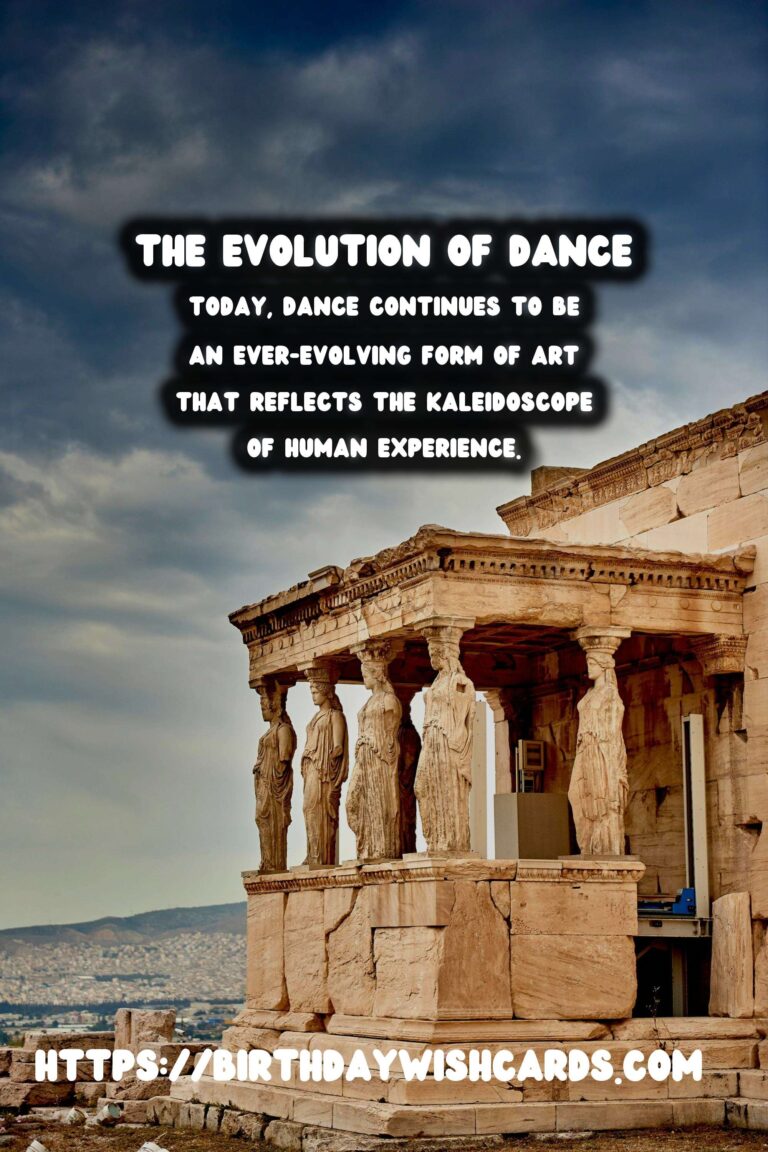
Introduction
Dance, a form of expression that transcends cultures and ages, has played an essential role in human history. From ancient rituals to modern forms, dance has evolved, reflecting the social, cultural, and political contexts of the times. In this article, we will explore the fascinating evolution of dance, tracing its journey through different eras and cultures.
Dance in Ancient Times
In ancient civilizations, dance was an integral part of rituals and ceremonies. Cultures such as the Egyptians, Greeks, and Chinese used dance to communicate religious beliefs, celebrate seasons, and mark significant life events. The rhythmic movements were often intertwined with music and storytelling, serving as a bridge between the divine and the mortal.
Medieval Dance Forms
During the medieval period, dance began to take on more social functions. In European courts, dance was a popular form of entertainment, with elaborate ballrooms being the settings for many a dance gathering. Popular medieval dances included the ‘Carole’ in France and ‘Circle Dances’ in England, which were often performed in groups and accompanied by singing.
The Renaissance and Baroque Periods
The Renaissance heralded a period of renewed interest in art and culture, and dance was no exception. This era saw the rise of ballet in the courts of Italy and later France. As court dances became more theatrical and dramatic, choreographers began creating elaborate performances that captivated audiences. The Baroque period further expanded on this, with intricate movements and the development of dance notation.
19th Century Dance
The 19th century was a revolutionary time for dance as it moved into the Romantic era. Ballet became more expressive and focused on storytelling, with iconic performances like ‘Giselle’ and ‘Swan Lake’ captivating audiences worldwide. This period also saw the emergence of social dances like the waltz, a dramatic departure from the formal court dances of the past.
20th Century Dance and Beyond
The 20th century was a time of great innovation in dance. From the rise of modern dance pioneers like Martha Graham, who broke away from classical ballet, to the emergence of jazz and contemporary styles, the century was marked by a diversity of movements and techniques. The later half of the century introduced hip-hop, street dance, and the globalization of Latin and African dance styles.
Conclusion
Today, dance continues to be an ever-evolving form of art that reflects the kaleidoscope of human experience. From its humble beginnings in ancient rituals to the diverse and inclusive world of modern dance, it remains a universal language that unites people across the globe.
Dance, a form of expression that transcends cultures and ages, has played an essential role in human history. Today, dance continues to be an ever-evolving form of art that reflects the kaleidoscope of human experience. 
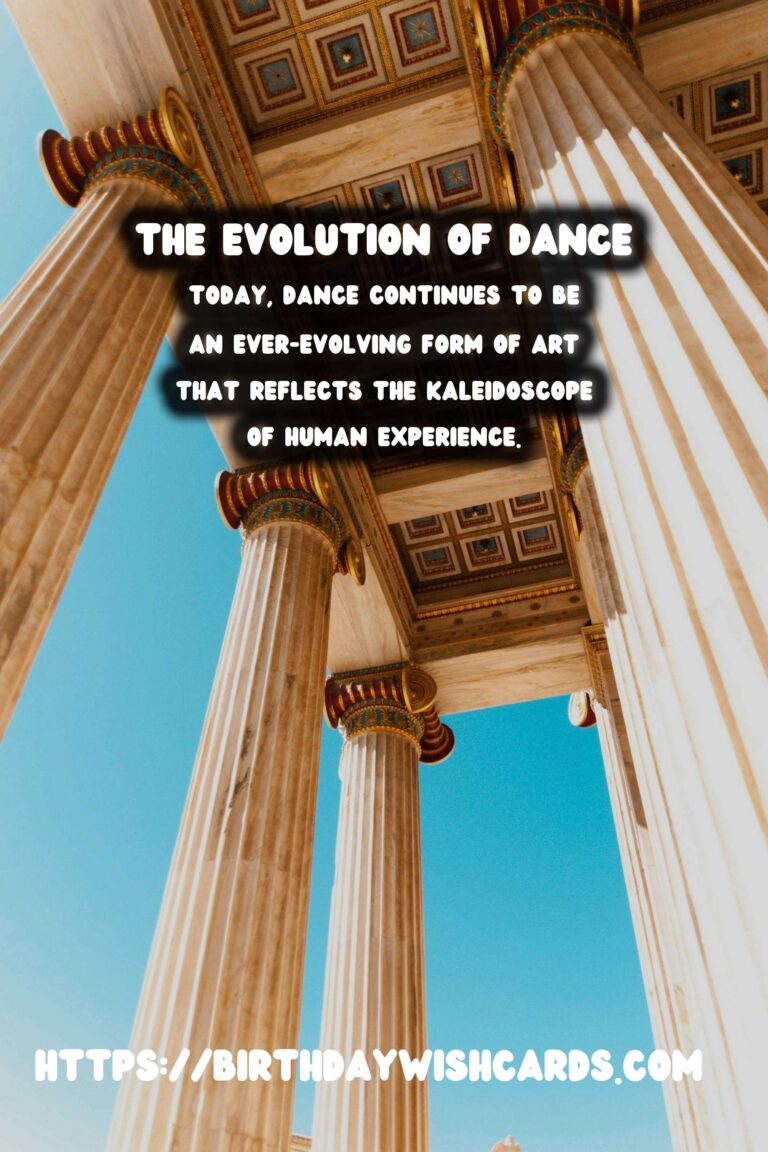
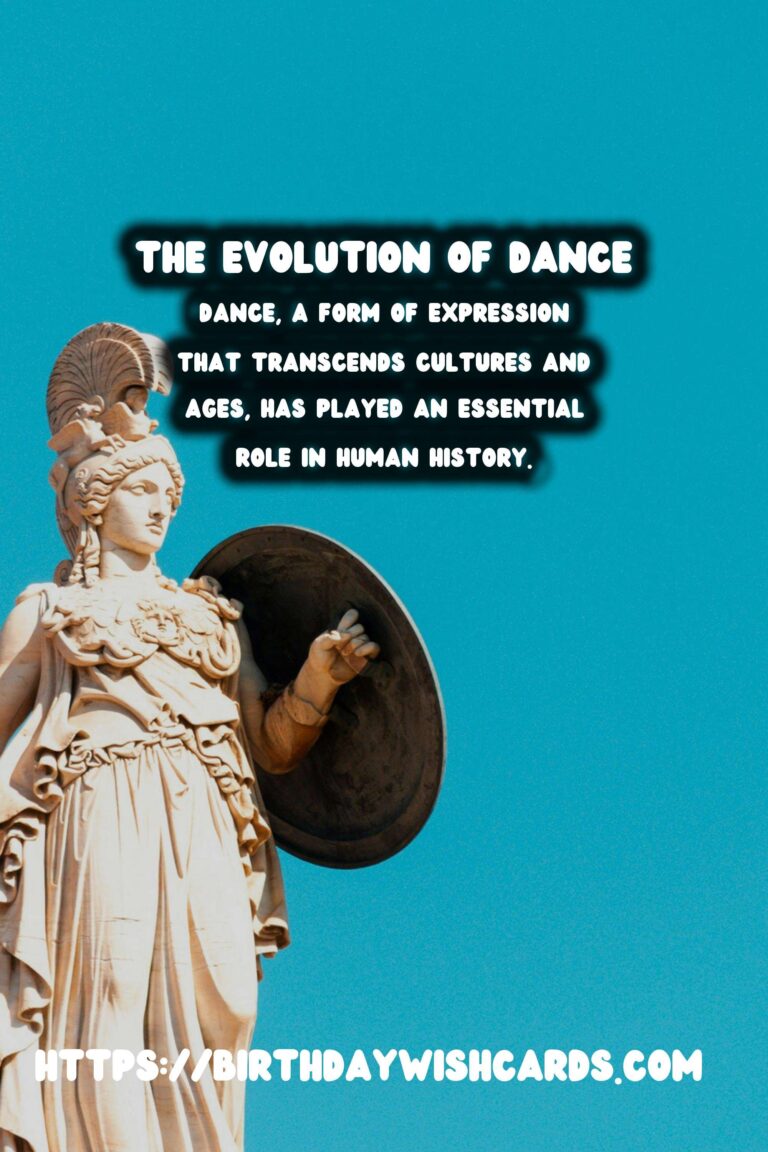
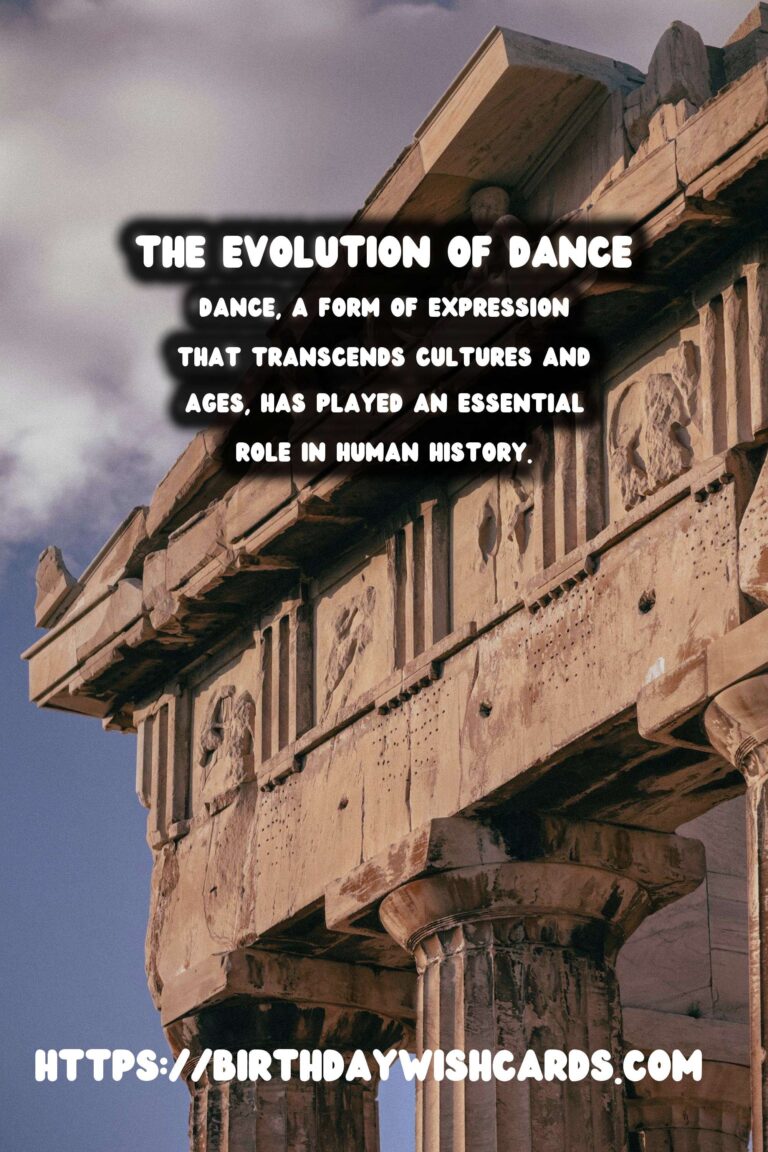
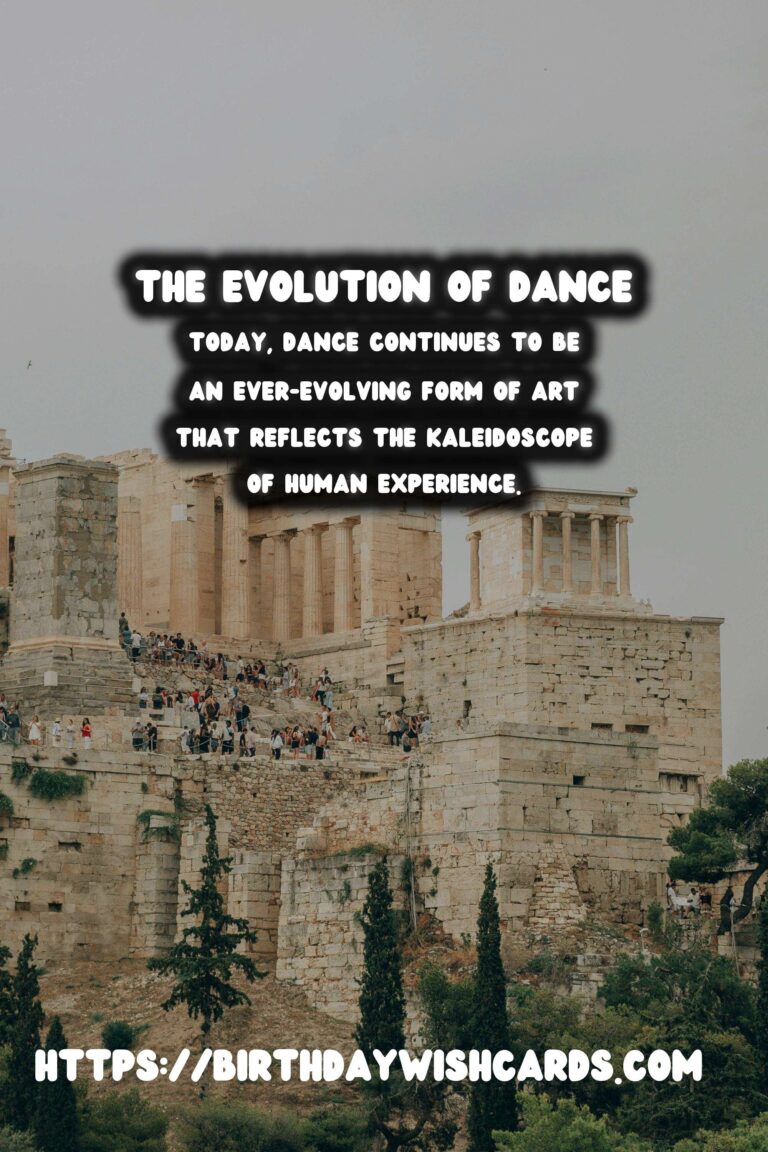
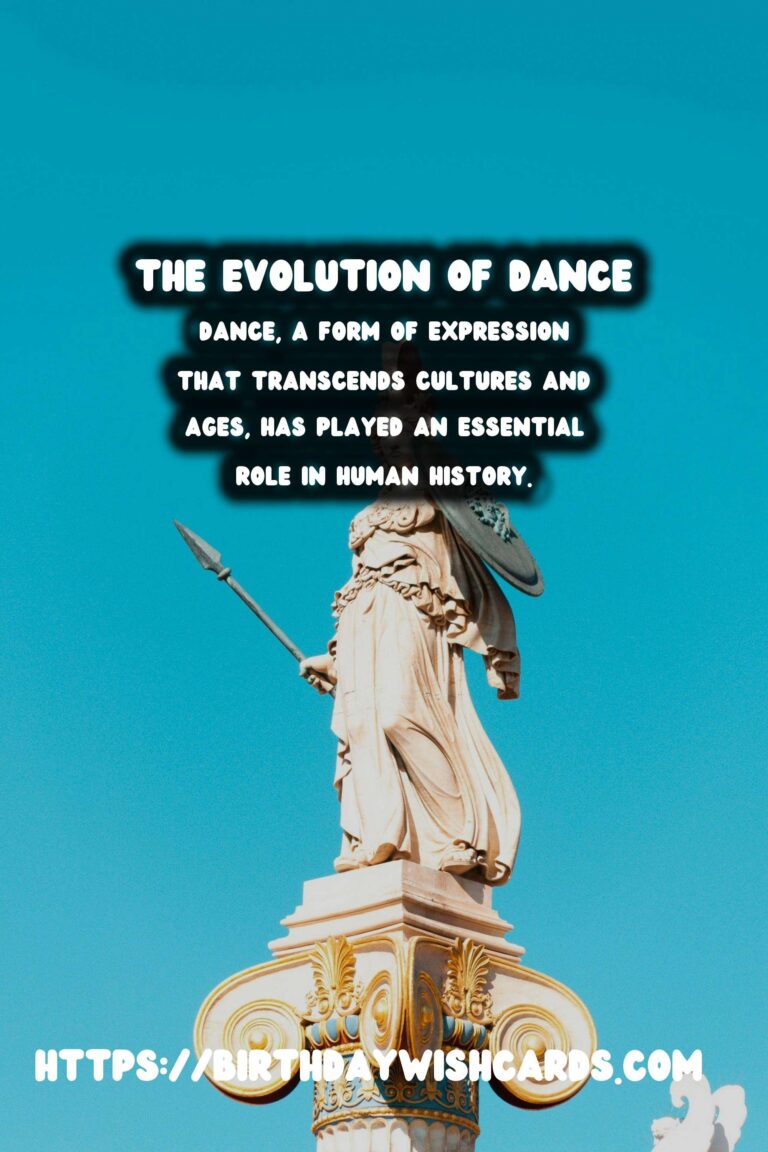
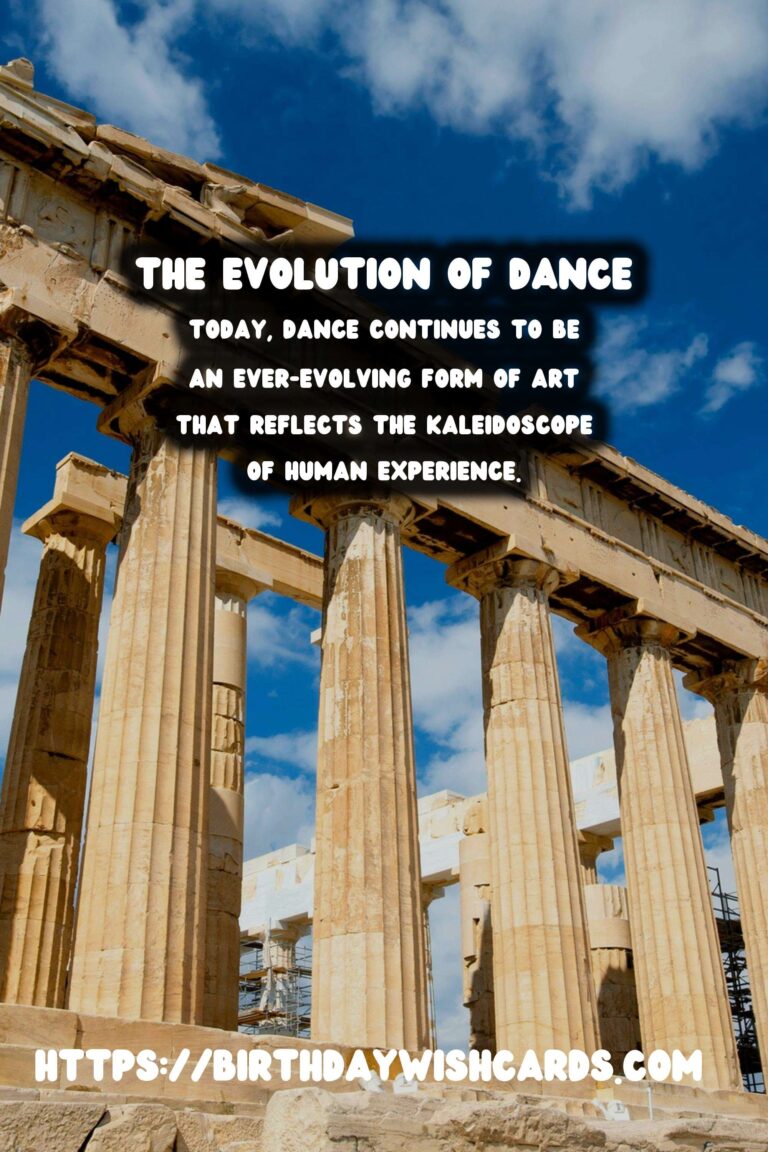

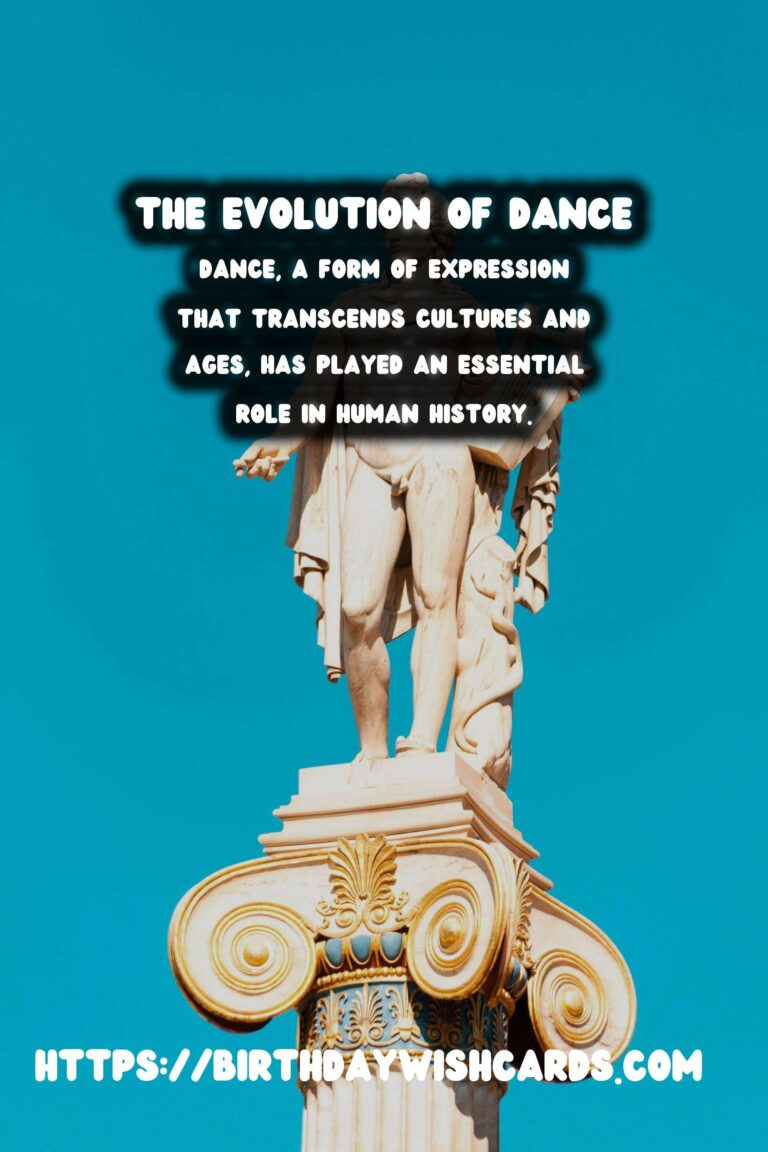
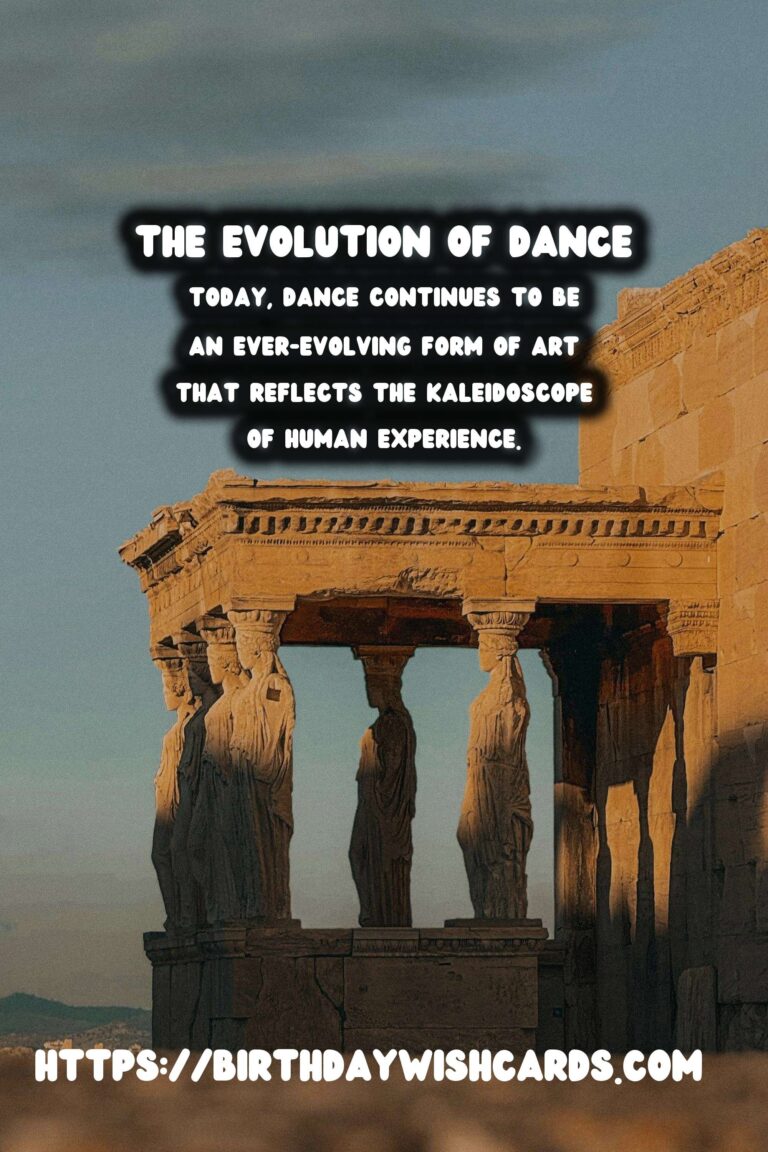
#DanceHistory #CulturalDance




